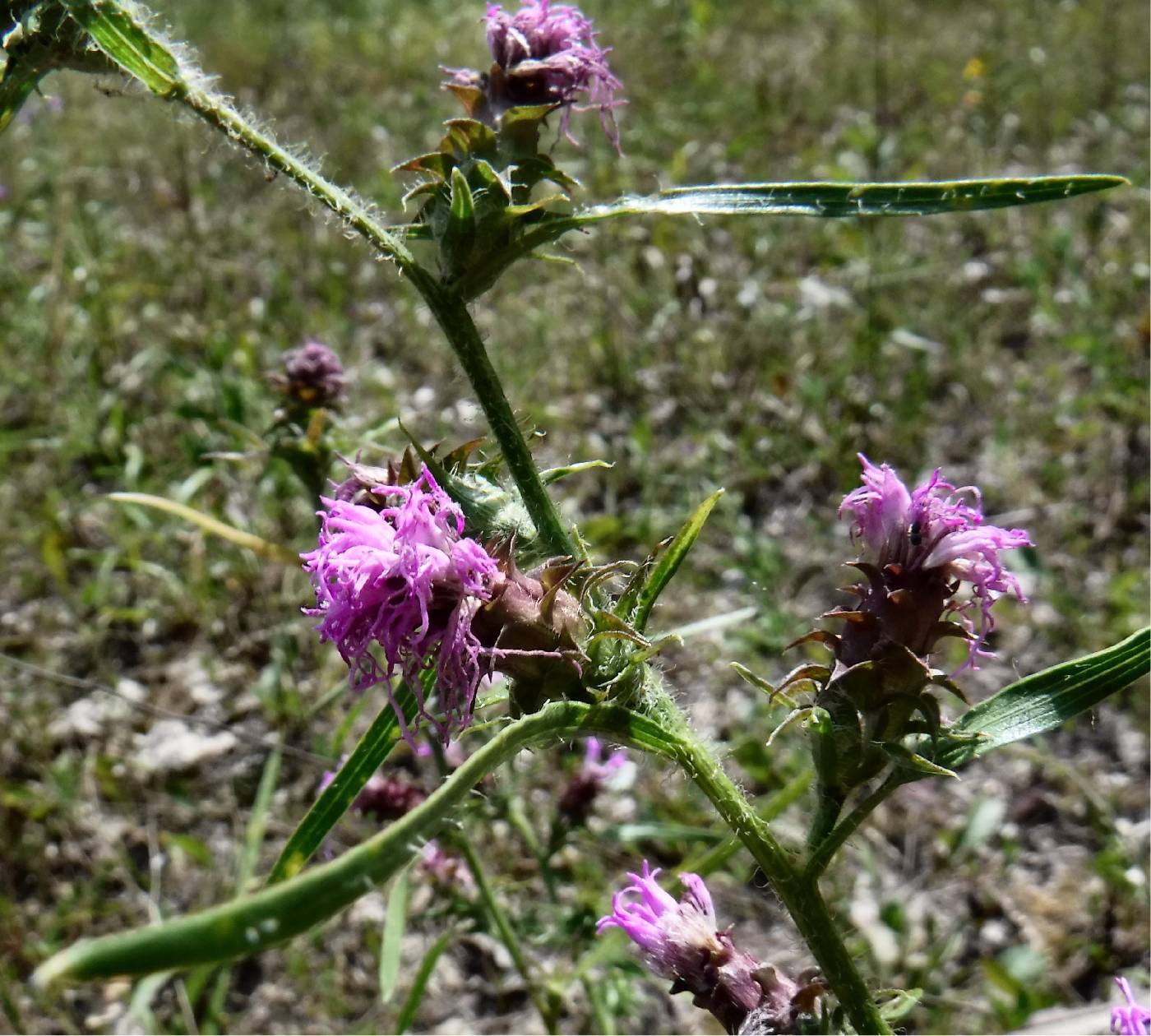
|
Family: Asteraceae |
Perennials, 20-180 cm (corms globose to depressed-ovoid or napiform, sometimes elongated, becoming rhizomes, roots all or mostly adventitious). Stems erect, simple or basally branched. Leaves basal and cauline; alternate; ± petiolate (basal) or sessile (usually appressed to ascending); blades usually 1-nerved, sometimes 3- or 5-nerved, mostly linear to ovate-lanceolate, margins entire, faces often gland-dotted (stipitate-glandular in L. glandulosa). Heads discoid, in corymbiform, cymiform, racemiform, or spiciform arrays. Involucres mostly campanulate to hemispheric or turbinate-cylindric, (2.5-)3-22(-25) mm diam. Phyllaries persistent or tardily falling, 18-40 in (2-)3-7 series, not notably nerved, ovate to elliptic or lanceolate, usually unequal (herbaceous to petaloid, margins often hyaline, often ciliate or irregularly toothed, apices often pink-white). Receptacles flat, epaleate. Florets 3-85; corollas usually lavender to dark magenta or pinkish purple, sometimes white, throats funnelform (lengths 4-6 times diams., externally glanduliferous, glabrous inside or pilose inside near filament insertions, hairs whitish, crisped); styles: bases not enlarged, glabrous, branches linear-clavate (papillate). Cypselae prismatic, 8-11-ribbed, usually hirsutulous to hirtellous-pilose (glabrous in L. oligocephala), usually gland-dotted; pappi persistent, of 12-40 coarsely barbellate to plumose bristles in 1-2 series. x = 10. The globose perennating structures of Liatris have been described as corms and cormoid rootstocks, the elongate ones as rhizomes and penetrating rootstocks. They are here regarded as corms and rhizomes, rather than roots with adventitious buds. New stems may be produced from various lateral points (nodes) of the corms. Some taxa show various stages of transition between globose structures and elongate structures that function like horizontal rhizomes. All other Liatrinae (except perhaps the shrubby Garberia) apparently produce rhizomes with fibrous roots, rather than a taproot.
Heads discoid, the fls all tubular and perfect; invol bracts imbricate, often with petaloid scarious margins; receptacle naked; fls pink-purple (white); style-branches elongate-clavate, obtuse, papillate, with inconspicuous ventromarginal stigmatic lines near the base; achenes ca 10-ribbed; pappus of 1 or 2 series of stout, barbellate or plumose bristles; perennial herbs from a thickened, usually corm-like rootstock; lvs alternate, entire, ±punctate, narrow and sessile or with the blade tapering to the petiole, the basal or lower cauline usually the largest; heads smallish to fairly large, in a mostly spiciform or racemiform (seldom corymbiform or evidently branched) infl, seldom solitary. (Lacinaria) 30, N. Amer. Gleason, Henry A. & Cronquist, Arthur J. 1991. Manual of vascular plants of northeastern United States and adjacent Canada. lxxv + 910 pp. ©The New York Botanical Garden. All rights reserved. Used by permission. |
This project was made possible in part by the Institute of Museum and Library Services [MG-70-19-0057-19].
Powered by Symbiota



